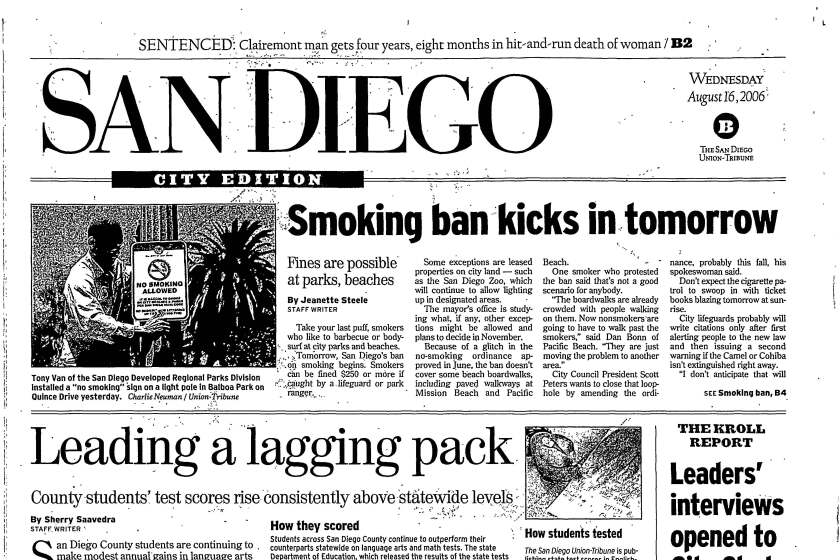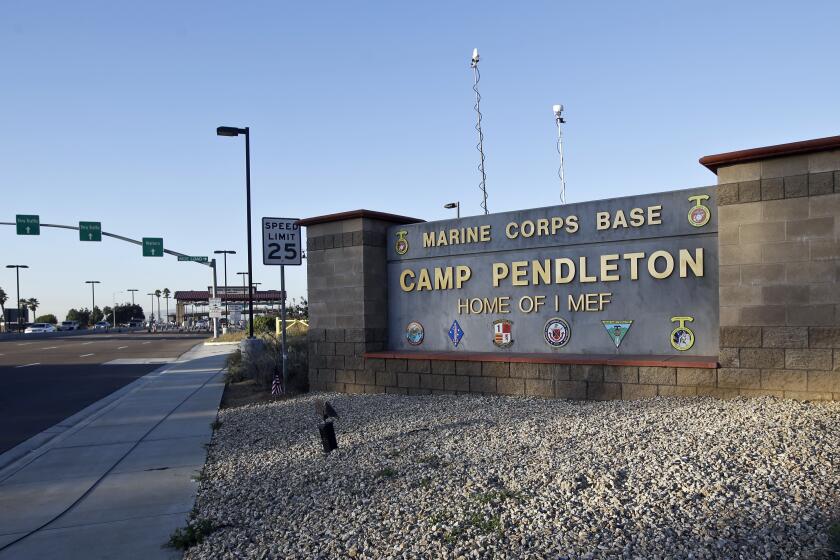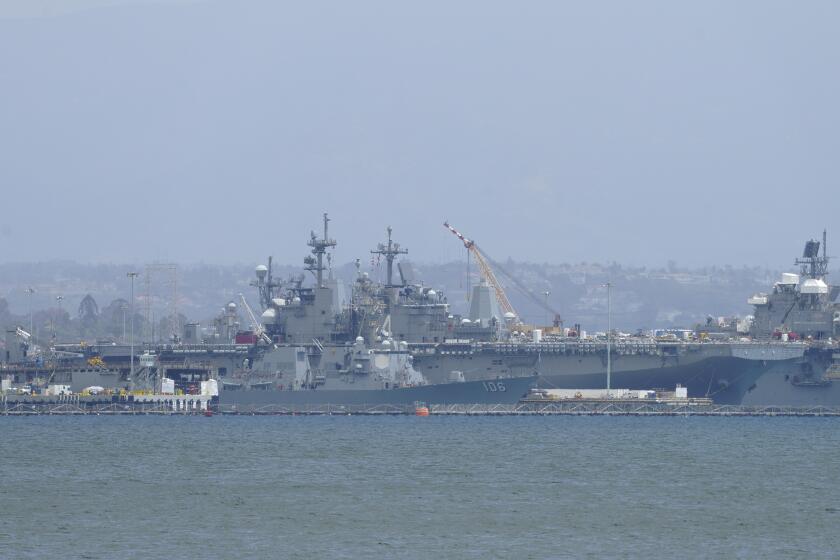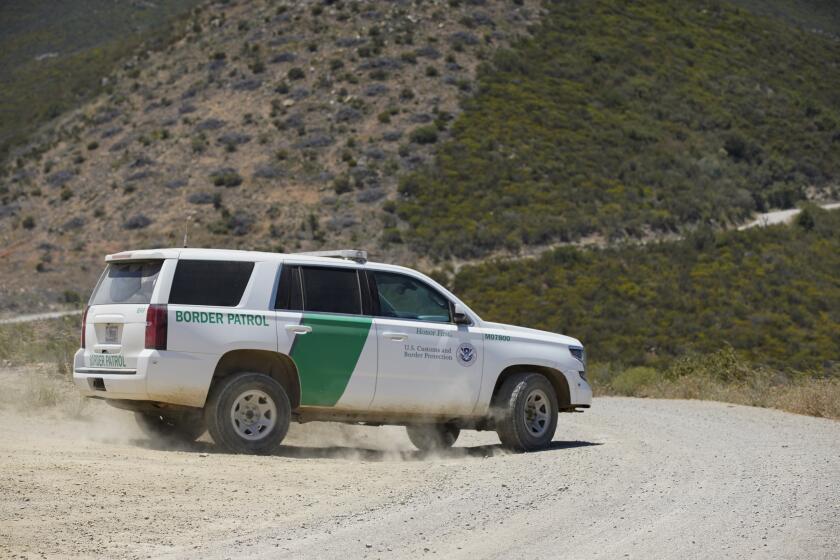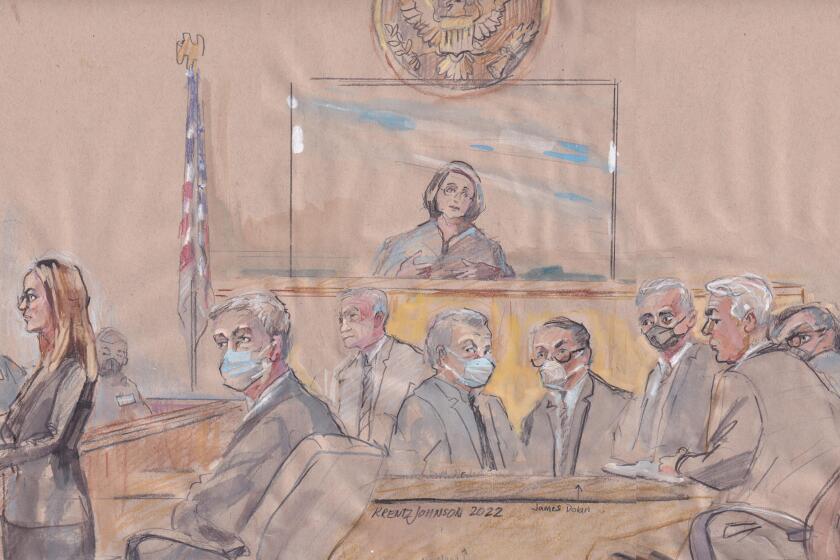The last moments of Jeremy Sears
In a twist of fate, another combat veteran is with him at the end
Chris Naganuma had the sense that something was wrong from the start.
He and his mother went to Oceanside’s Iron Sights indoor gun range for a simple practice session.
In the lane next to him, a guy in a backward baseball cap was shooting haphazardly. Even at only 10 feet away, he could barely hit the target’s inner circle.
Naganuma, a 28-year-old Army veteran, sized up his neighbor as a fellow vet. T-shirt, jeans, flip-flops. The man wore a black metal bracelet, a “hero bracelet” bearing the name of someone killed in action.
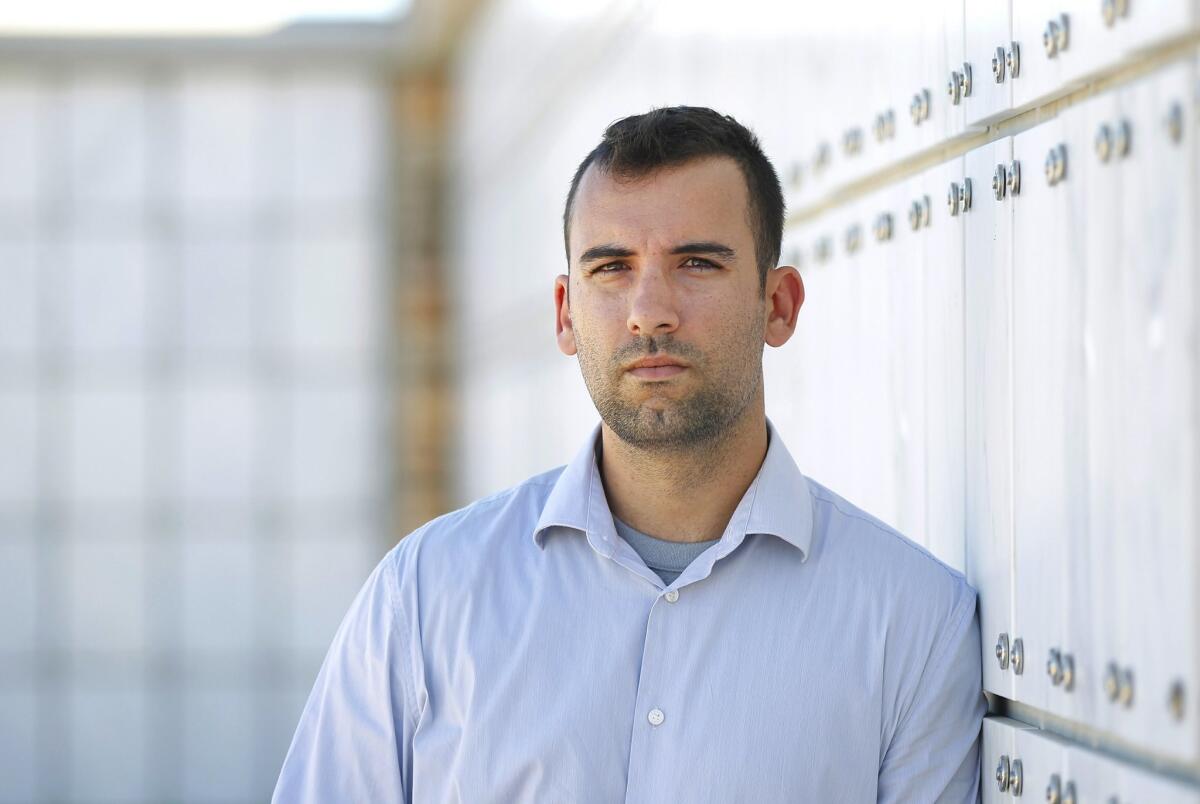
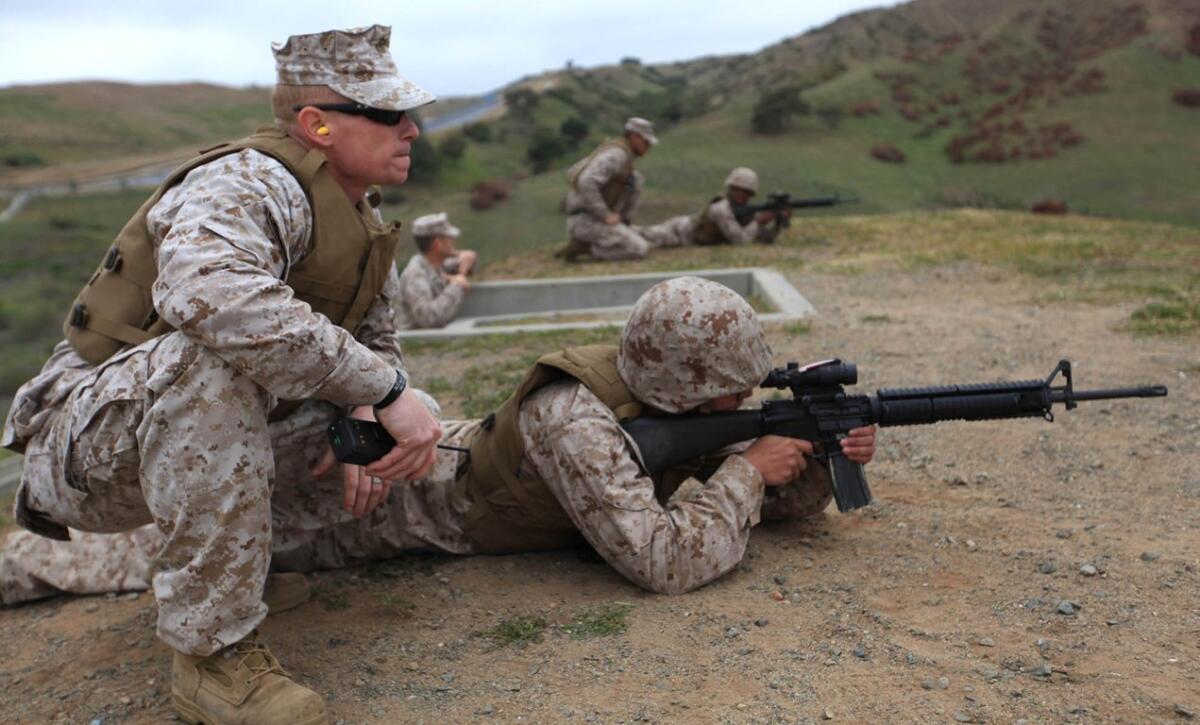
Naganuma wears two himself.
“First thing I asked him was, ‘Hey man, where did you deploy to, and how are you doing?’”
“He stopped for a second. Looked up at me,” Naganuma recounts.
“And the only thing he said was, ‘Nowhere important, man. But thanks for asking.’”
•••
A lot of people would consider it an unfortunate twist of fate to end up at that gun range alongside Jeremy Sears on Oct. 6.
But not Naganuma. He would be the last person Sears saw.
Like Sears, Naganuma had gone through hard combat. He enlisted in the Army at 18 years old in 2003, just in time for the bloodiest part of the Iraq War.
The next year, he deployed from Fort Lewis, Wash., with a Stryker Brigade. It was October 2004, and the destination was Mosul, Iraq.
It was a long year that included the November 2004 Battle of Mosul. In that nine-day conflict, hundreds of insurgents overran Iraqi security forces in an attempt to claim this city on Iraq’s northern edge. U.S. soldiers partially retook the town thanks to fierce house-to-house fighting.
Naganuma, who goes by “Nug,” survived his five-year Army career with his limbs intact. He counts himself lucky.
But he lives with post-traumatic stress disorder — and the accompanying anxiety and apathy toward portions of life — in response to his combat service.
Along the way, he was crushed between two of his Stryker vehicles, resulting in back, neck and shoulder issues. Sometimes, his arms and legs just go numb.
He got a medical discharge from the Army in 2008, making him a 20-something whose chief job experience is weapons and fighting.
The former soldier has few nice things to say about the U.S. Department of Veterans Affairs.
He describes paperwork snafus, the runaround with appointments and a protracted appeals battle to reach the 90 percent VA disability rating he now holds.
Naganuma says the VA supplied him with a medicine cabinet full of pills. One was an antidepressant with a sleep agent. He stopped taking it after his mother discovered him conked out on the stairs for 18 hours.
When he finally found a VA health provider he liked in Long Beach, he started sending thank-you notes after each visit. He didn’t want that person to forget him and allow him to get lost in the shuffle.
“I’ve dealt with the VA for a very long time, and I was very close to the point of what Jeremy did,” Naganuma admits.
•••
The two men took separate, but similar, paths to end up at that Oceanside gun range.
Sears enlisted in the Marine Corps in his mid-20s, after first trying his hand as a metalworker outside of Chicago.
His wife, Tami, met him before he joined the Corps. He always wanted to go the military route, just wanted to try out civilian life first.
Sears signed up as a rifleman — the building block of the Marine Corps — in 2004. He was stationed at Camp Pendleton for most of his career, assigned to the hinterlands of the base with the 2nd Battalion, 5th Marine Regiment. Those Marines are “grunts,” and proud of it.
In his eight years in uniform, Sears deployed several times to Iraq.
His final combat tour was to Afghanistan in 2010, where he survived his second experience with a bomb blast.
The black “hero bracelet” was for a friend who died later that year.
Sgt. Ian Tawney was killed in October 2010 by a roadside bomb. Sears had tried to switch companies — even bucking his superiors — so he could back up his buddy on that deployment, according to friends and family.
The loss hit Sears hard, his wife says.
In 2012, he left the Marine Corps as a sergeant. As a squad leader with loads of combat experience, he suspected that a promotion would mean departing the field for a desk job.
Tami Sears said her husband expected to do contract security work — what she called “mercenary” or soldier-for-hire jobs — after he got out. But the contract he was offered would have meant spending many months away from home. After his long deployments, he didn’t want to leave his wife again.
Part of Sears’ story is that after a 16-month wait, he was turned down for disability benefits by the VA. Why? It’s hard to say for sure.
Some veterans advocates contend the VA follows a pattern of denials that require a vet to appeal several times to achieve any significant disability rating. Naganuma is certainly in this camp.
But VA officials in San Diego report that Sears missed some physical exams required for the rating process. In other words, if he didn’t appear to be examined, they couldn’t determine if he had the lower-back pain, groin trouble or several other physical problems for which he sought compensation.
Sears attended all the appointments he knew about, his wife and friends say.
Also, Sears screened as not having post-traumatic stress disorder, or PTSD, and traumatic brain injury in 2012 when entering the VA health-care system. But then in January, a doctor diagnosed traumatic brain injury during a benefits exam.
He never sought care for that.
He also never admitted to his wife that he might have PTSD — until it was too late.
The weekend before Sears died, he first opened up to his wife about possibly having “survivor’s guilt” — sometimes seen as a symptom of PTSD.
Tami Sears now believes that her husband probably had combat stress as early as his first deployment. But as a man of few words and a tough-guy, “John Wayne” Marine, he didn’t like to show weakness, according to people who knew him.
And hoping to land a security job, he feared that any blemish on his medical record might quash his chances.
•••
At first, Naganuma thought he had shot Sears. It’s not unheard of for a bullet to ricochet off the metal bracket holding a target.
In his side vision, the former soldier saw something slump heavily to the ground. There was a lot of blood.
All the telltale signs from earlier clicked into place. The sloppy shooting. The disinterest in Naganuma’s friendly question. The devaluation of his own service.
“Nowhere important, man. But thanks for asking.”
Naganuma realized in an instant what had happened.
Sears had reloaded his pistol and fired one shot into his head.
Naganuma dropped to his knees next to Sears, rolling the wounded man onto his side as blood began to pool in his mouth.
Sears was still breathing. But there wasn’t much Naganuma could do.
“I held onto him. Put my hand on his head,” the former soldier said.
Other people rushed in, including the range manager.
Naganuma, covered in Sears’ blood, told him to pray.
“I started crying,” Naganuma remembers. “The only thing I could say was, ‘He’s a f--king veteran. This is going to be another statistic.’”
Sears was pronounced dead just after 2 o’clock on the afternoon of Oct. 6. Paramedics tried, but they couldn’t patch up the final, fatal wound.
Naganuma thinks the Marine veteran tried to be courteous about his ending.
The gun range was pretty quiet that day. Sears waited until Naganuma’s mother, Kathi Conroy, left the shooting lane to find the restroom.
Then, despite being right-handed, he used his left hand to fire his last shot. That sent the bullet to the right, where no one else was standing.
“I just know what was going through his head,” Naganuma says. “I can just imagine how exhausted he was.”
•••
Naganuma has lost buddies overseas. He’s also lost them to suicide.
He wasn’t with each of them when they died. In a peculiar way, the former soldier is glad that he was present for Sears, though he was unable to save him.
“Just having someone who had been deployed and knew exactly what was going on in his mind,” Naganuma said. “Just to sit next to him and be with him. It’s like — what else can you do?”
The former soldier has stayed in the gun business, taking the entrepreneurial path.
“Nug” shoots on a competitive team sponsored by the gunmaker Black Rain Ordnance. He participates in 3-Gun Nation and Outlaw shooting events. He co-owns a business called S3F Solutions that distributes gun-related gear.
In those circles, Naganuma runs into young vets all the time. He sees something of Jeremy Sears — and himself — in many of them.
“You just never leave the desert. It’s always in your head,” the Army veteran says. “And it’s something that takes a long time to deal with. It took me about five years before I started feeling normal again.”
In the gun world, Naganuma says, teenagers come up and ask him about battle.
He worries about how the United States will handle the issues facing not only his buddies, but any younger troops that might head into combat situations as fighting flares up again in Iraq.
“You are going to have two or three generation of kids — for however long we’re at war on this global war on terror — that are going to deal with these issues.”
•••
Among the dozens attending Sears’ Oct. 22 memorial service at Miramar National Cemetery is Naganuma. He wears a respectful blue dress shirt and slacks. His eyes are hidden behind black sunglasses. And on his wrist are the black bracelets.
One is for Spec. Marques Knight, 24, killed in action in September 2008 in Afghanistan’s Korengal Valley.
Knight had served with Naganuma at Fort Lewis and in Iraq. After leaving the Army, Knight spent time with Naganuma’s family in San Juan Capistrano before returning to the uniform to bolster his finances.
To Naganuma and his mom, Knight is a family member lost to war.
Naganuma speaks in a precise, methodical way, as one might expect from a former Army sniper.
But his emotions well up when he talks about Sears.
“It makes me very angry,” he said. “I mean, extremely angry.”
Get Essential San Diego, weekday mornings
Get top headlines from the Union-Tribune in your inbox weekday mornings, including top news, local, sports, business, entertainment and opinion.
You may occasionally receive promotional content from the San Diego Union-Tribune.

